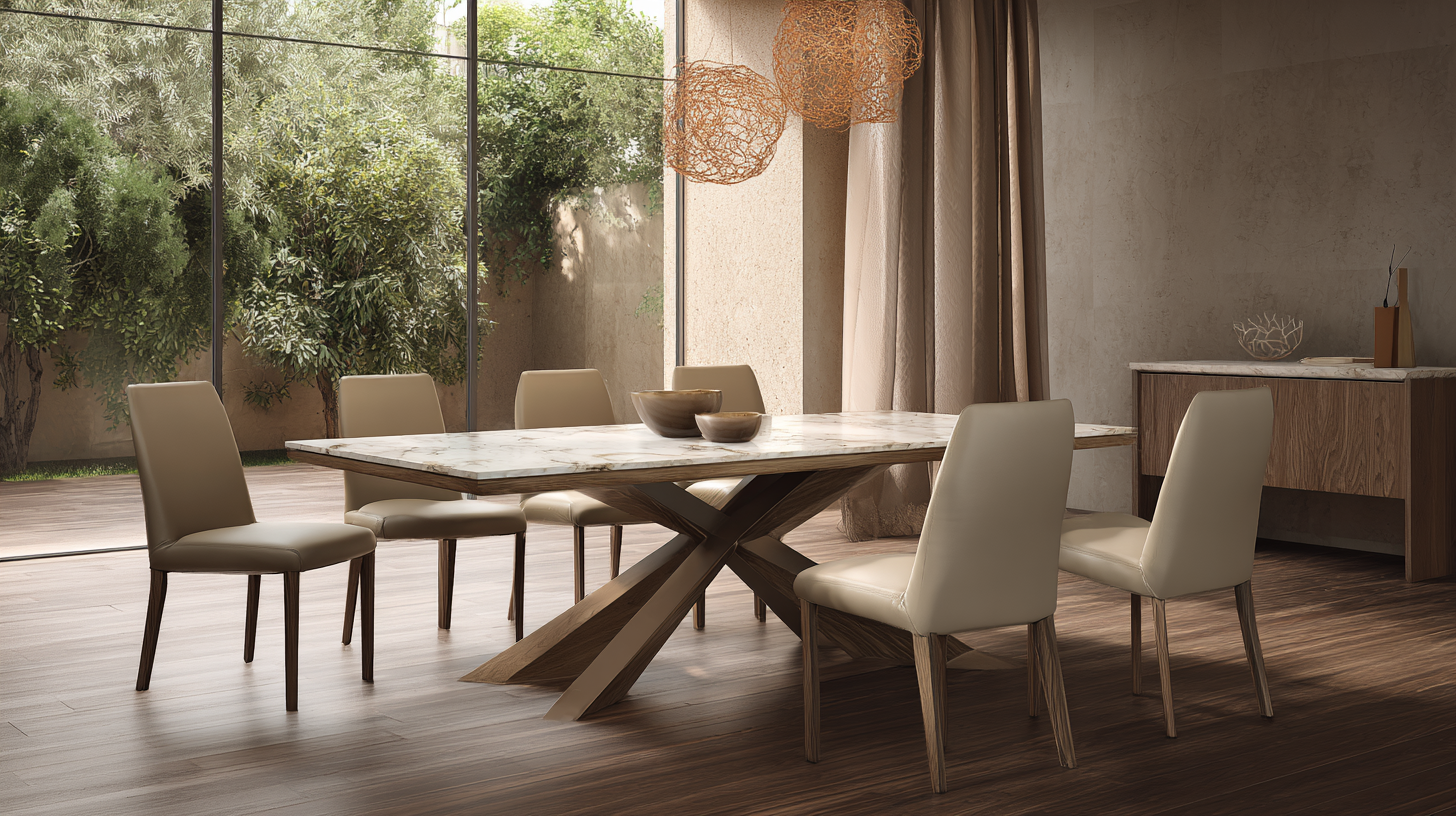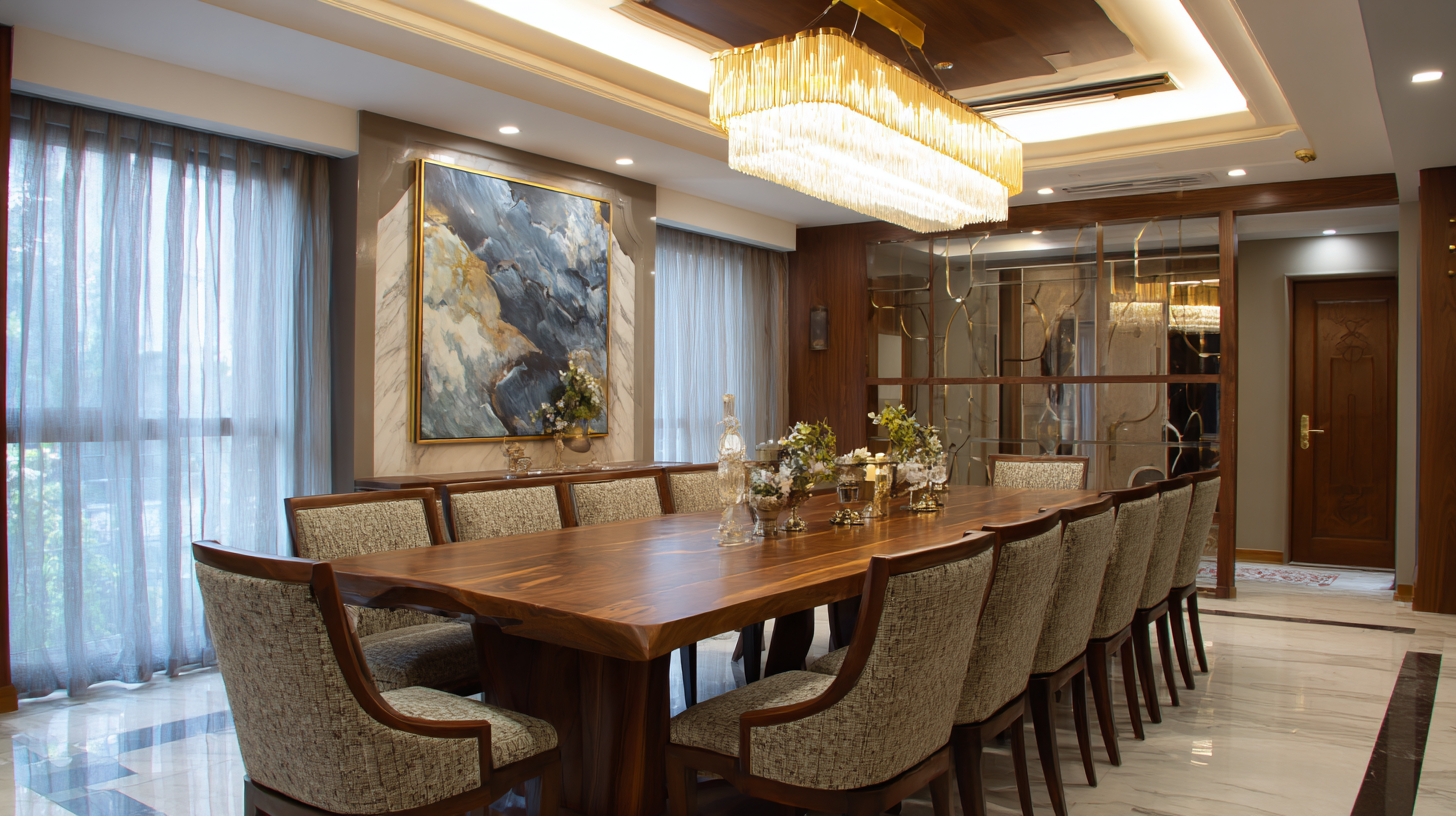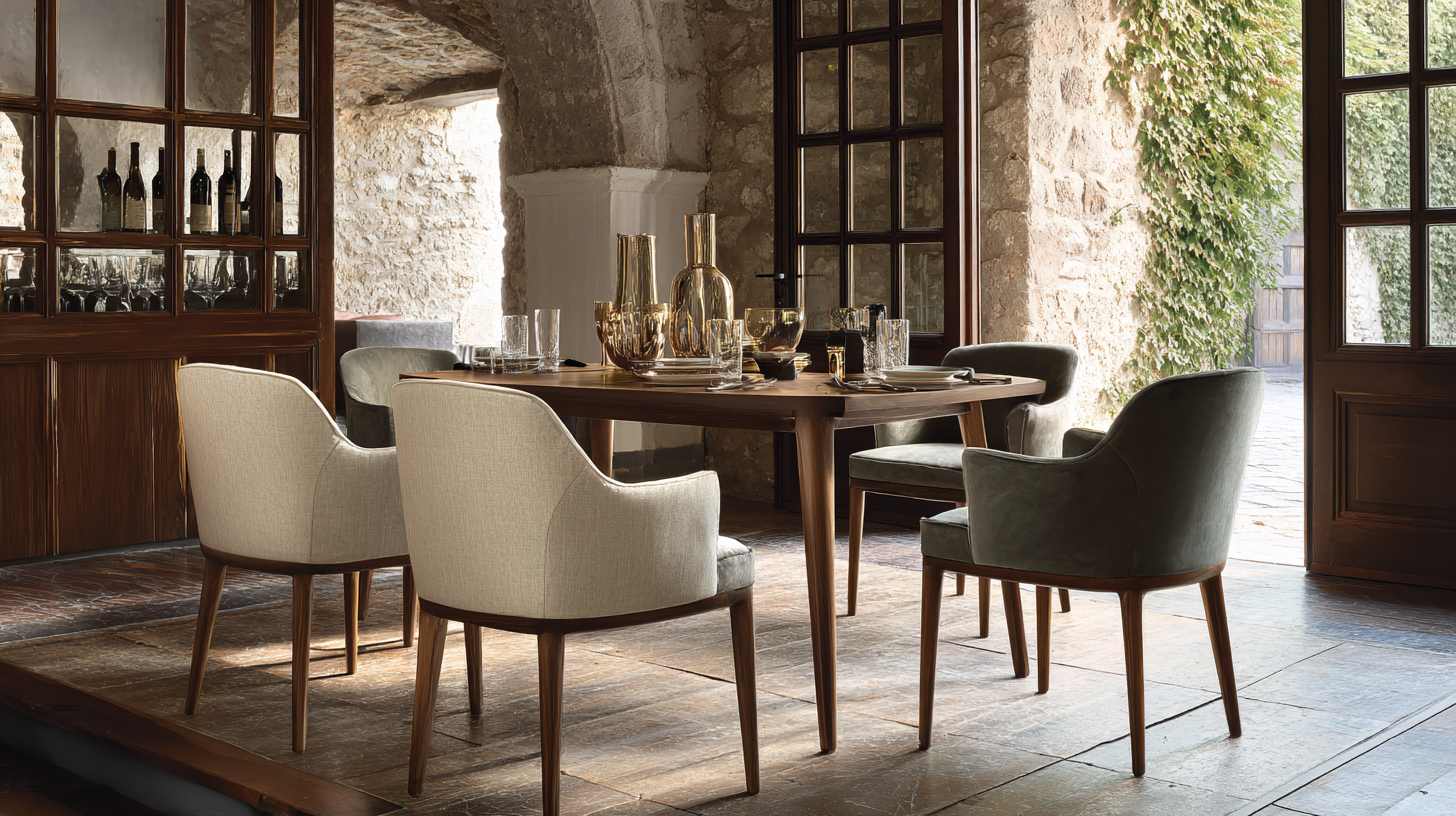
Common Issues When Choosing Best Dining Tables with Chairs for Your Space
Choosing the perfect dining tables with chairs can transform your dining experience and elevate the overall ambiance of your space. In this ultimate guide, we will explore the common issues that many face when selecting the ideal dining furniture for their homes. From size and material to style and functionality, understanding these key aspects is crucial for making a well-informed decision. Whether you have a cozy apartment or a spacious dining room, the right combination of dining tables with chairs not only enhances comfort but also reflects your personal taste.

Join us as we delve into the essential factors to consider and avoid pitfalls that could lead to an unsatisfactory dining setup. With the right guidance, you can create an inviting dining area that caters to both everyday meals and special gatherings.
Understanding the Importance of Size and Scale in Dining Table Selection
When selecting the perfect dining table for your space, understanding the importance of size and scale is crucial. An oversized table in a compact room can create a cramped feeling, making it challenging to navigate around the furniture. Conversely, a tiny table in an expansive area can make the space feel disjointed and uninviting. Measure your room carefully, noting both the dimensions of the space and the existing furniture. This will help you identify the most suitable size for your dining table, ensuring it complements your overall decor while providing adequate room for movement.
Moreover, consider the scale of the dining chairs in relation to the table. The height and width of the chairs should harmonize with the table, creating a balanced look. A table that is too low paired with tall, bulky chairs can create an awkward visual, while petite chairs around a large table can appear lost. Ideally, leave sufficient space between the table and chairs to allow for comfortable movement. By focusing on size and scale, you can create a dining area that not only looks stylish but also functions well for your lifestyle.
Common Issues When Choosing Best Dining Tables with Chairs for Your Space
Choosing the Right Material for Your Dining Table and Chairs
When selecting the perfect dining table and chairs for your space, the choice of material plays a crucial role in both aesthetic appeal and functionality. With the dining table market projected to grow significantly, reaching $13.71 billion by 2032, homeowners are increasingly attentive to the qualities of materials available. Solid wood, for instance, offers timeless beauty and durability, making it a favorite for traditional settings. On the other hand, metal frames or glass tops can provide a modern twist, appealing to those who favor contemporary designs.
Another important consideration is the maintenance and longevity of the materials. While wood can be susceptible to scratches and moisture damage, many modern finishes and treatments can enhance its resilience. Alternatively, materials such as laminate or composite surfaces offer practicality, as they are typically more resistant to wear and easier to clean.
Understanding the strengths and weaknesses of various materials will help you make an informed decision that complements your lifestyle and enhances your dining experience, ensuring that your investment withstands the test of time.
The Impact of Style and Aesthetics on Your Dining Space
When selecting dining tables and chairs for your space, the style and aesthetics play a crucial role in creating a harmonious environment. The dining area is often the heart of a home, where families gather and memories are made. Therefore, the design elements you choose should reflect your personal taste while complementing the overall decor of your home. Whether you prefer a modern minimalist look or a rustic farmhouse vibe, the right combination of dining table and chairs can enhance the visual appeal of your space.
Consider the colors, materials, and shapes of the dining furniture. For instance, a sleek glass table paired with upholstered chairs can add a contemporary flair, making the space feel open and airy. On the other hand, a wooden table with metal accents can introduce warmth and character. Additionally, think about the scale of the furniture in relation to the size of your dining area; oversized pieces can overwhelm a small room, while smaller furniture may get lost in a larger space. By carefully considering these aesthetic factors, you can create a dining experience that is not just functional but also beautifully designed.

Considering Functionality and Flexibility in Dining Furniture
When selecting dining tables and chairs, functionality and flexibility play crucial roles in enhancing the overall dining experience. According to a report by the National Kitchen & Bath Association, 70% of families prioritize multi-functional furniture, highlighting the increasing demand for versatile dining solutions. Spaces can significantly benefit from tables that easily transition from intimate family dinners to larger gatherings, ensuring that they accommodate varying numbers of guests without compromising comfort or style.
Tips for choosing a flexible dining table include considering extendable designs. These tables can serve as cozy setups for everyday meals but can also expand to host larger gatherings, making them ideal for compact spaces. Additionally, selecting stackable chairs can save valuable space when not in use, allowing you to maintain an uncluttered environment.
Moreover, opting for materials that are both durable and aesthetically pleasing can enhance the functionality of your dining area. A survey by Furniture Today revealed that 65% of consumers are shifting towards sustainable materials like reclaimed wood and eco-friendly finishes. This trend not only provides longevity to your furniture but also fits seamlessly into various décor styles, giving you the flexibility to adapt your space over time.
Budgeting Wisely for High-Quality Dining Tables and Chairs
When budgeting wisely for high-quality dining tables and chairs, it's essential to consider both function and expense. Popular discussions among homeowners have highlighted the benefits of using dining benches instead of traditional chairs. A single bench can accommodate 2-3 people comfortably, making it a more economical choice, especially in smaller dining spaces. This consideration can significantly reduce costs while maximizing seating options.

Tip: When exploring your options, think about the layout of your dining area. A bench can provide flexibility in seating arrangements and can easily be tucked away when not in use. Additionally, a well-chosen table may serve dual purposes, functioning not just as a dining surface but also as a workspace or a gathering spot for family activities, thereby providing greater value for your investment.
When aiming for quality within a budget, prioritize materials and craftsmanship. Look for solid wood or durable finishes that can withstand everyday use. Investing in a strong table and versatile seating will ensure longevity, allowing you to enjoy your dining space for years without needing to replace worn-out furniture.